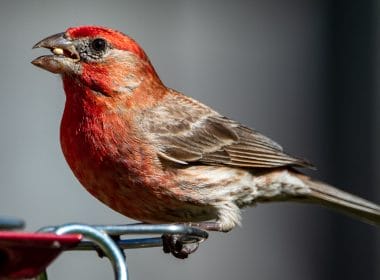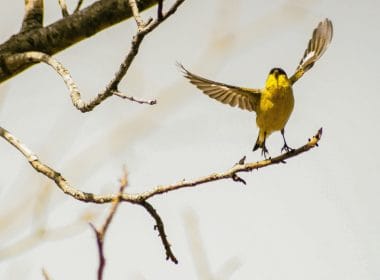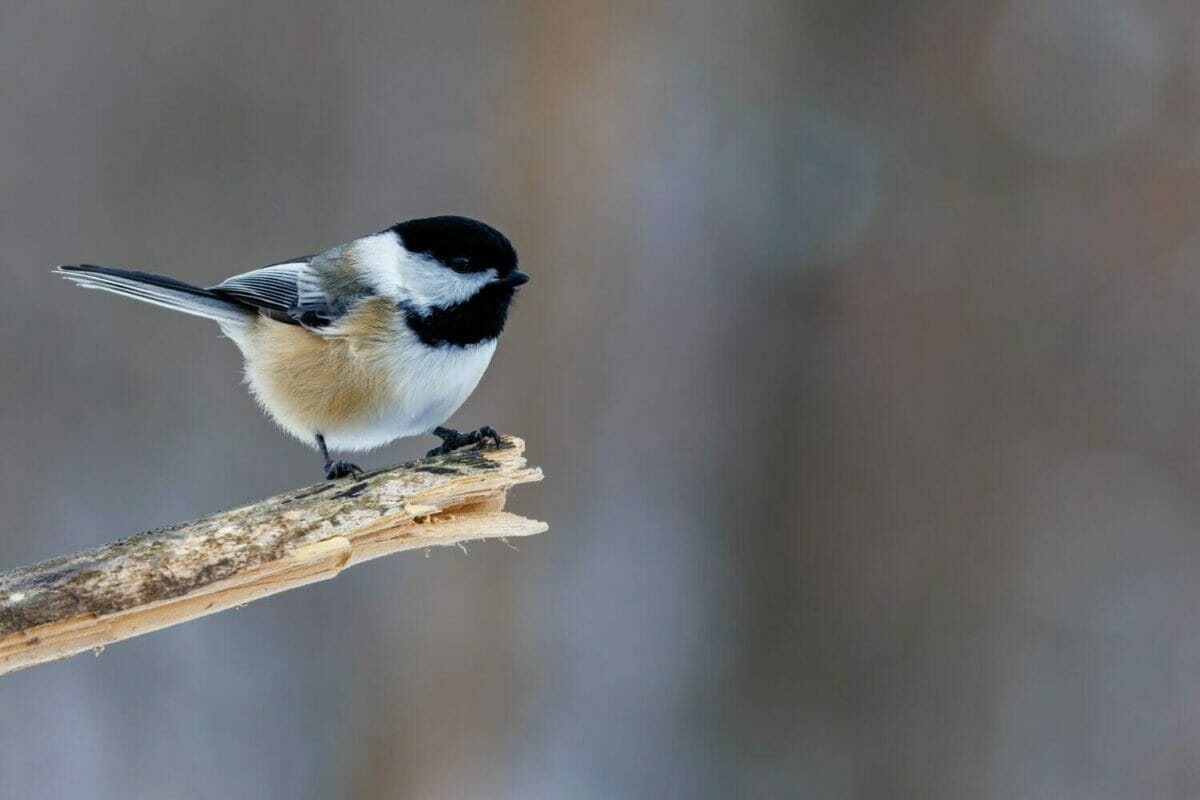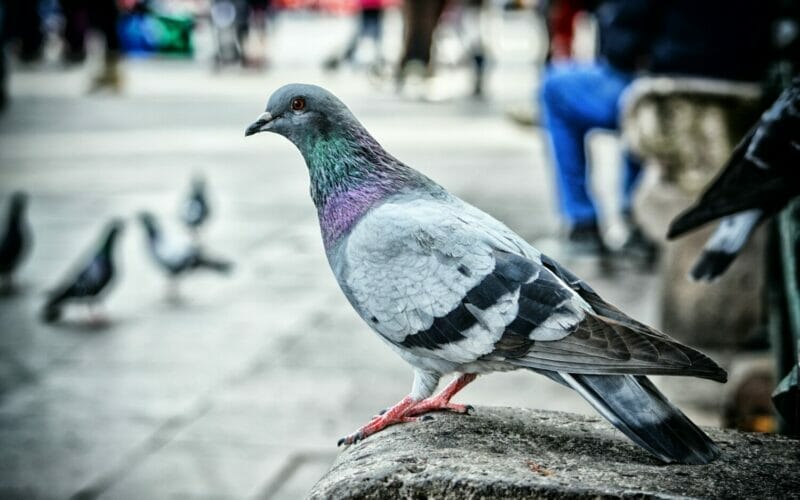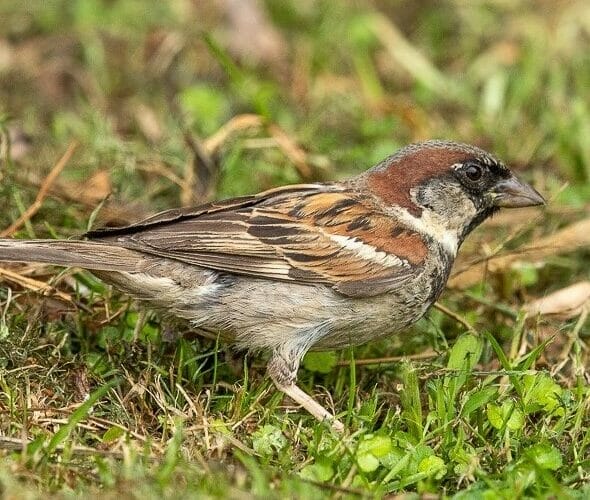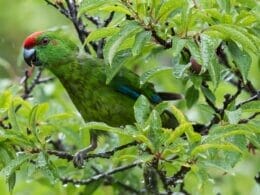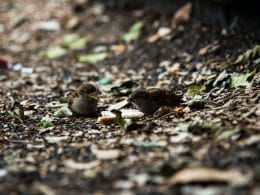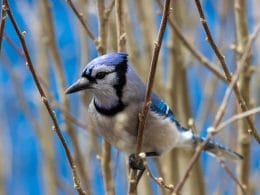The ABA (American Birding Association) lists 7 species of Chickadee in the United States. In this article we will be looking in more detail about this tiny but charismatic bird. What are the different species? Where do they live? What do they eat? And most importantly where do they nest and how to they build them?
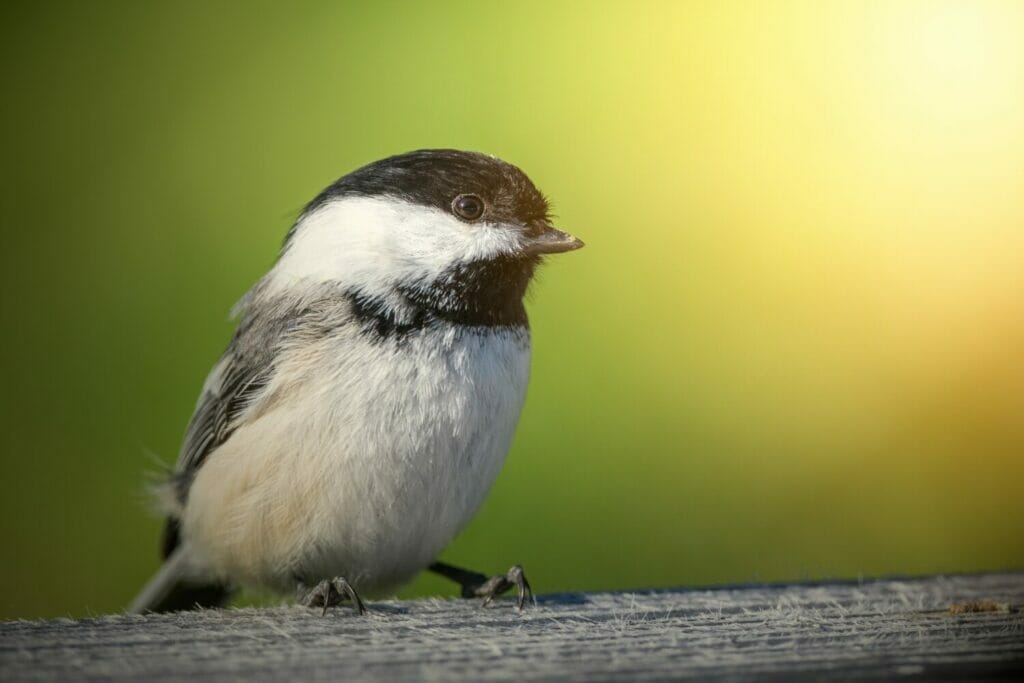
What are Chickadee?
Chickadee and Titmice are members of the Paridae family. They, in turn, are part of the songbird or passerine order. Characteristically, they are small birds (less than 5 inches long) with stout bills, rounded wings and strong feet. They are intelligent and curious. Eating mostly insects and berries, they will also visit backyard bird feeders.
Species of Chickadee
Carolina Chickadee (Poecile carolinensis)
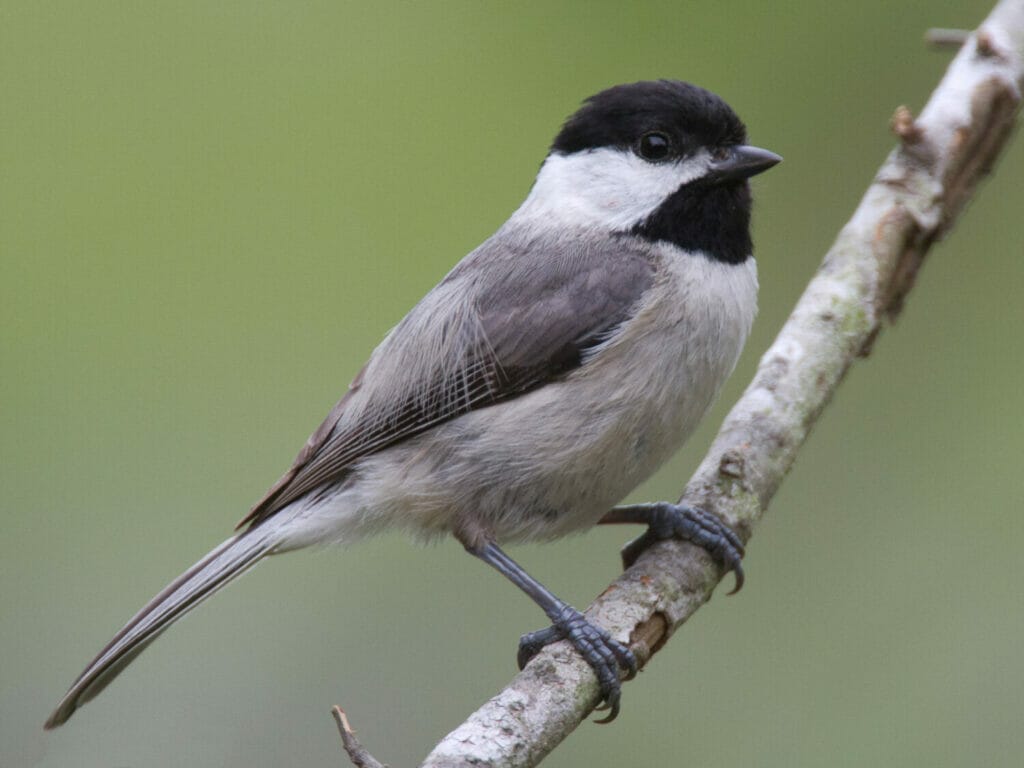
The Caroline Chickadee is a common resident of south-east continental America. It is a tiny grey bird, measuring less than 5 inches long. Present in forests, urban and parkland areas, it is also a regular visitor to bird feeders where it collects seeds and uses its strong bill to open them. It has a distinct black cap and throat, which make it readily identifiable.
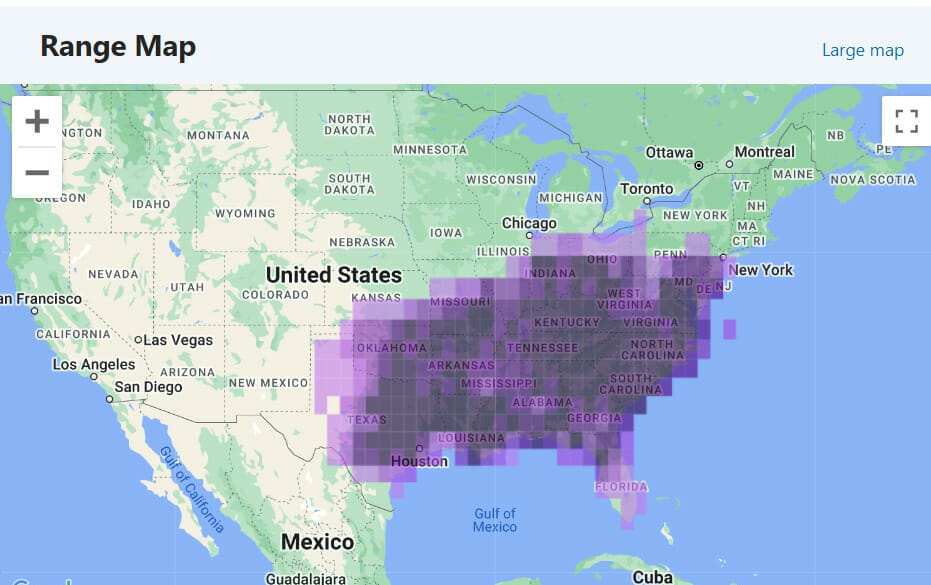
Black-capped Chickadee (Poecile atricapillus)
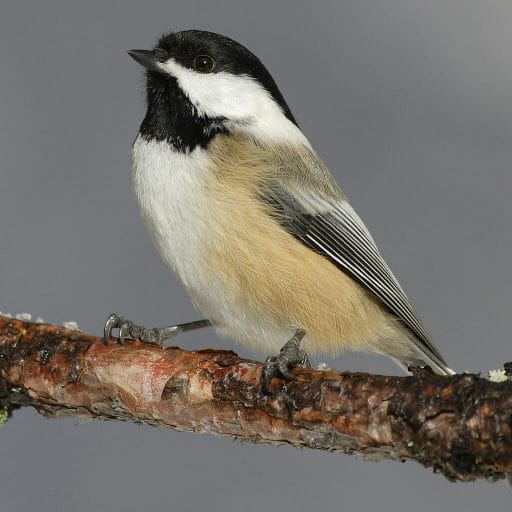
Slightly bigger than the Carolina Chickadee at a maximum of 6 inches long, the Black-capped Chickadee is otherwise nearly identical. Careful attention to the range of both should enable correct identification.
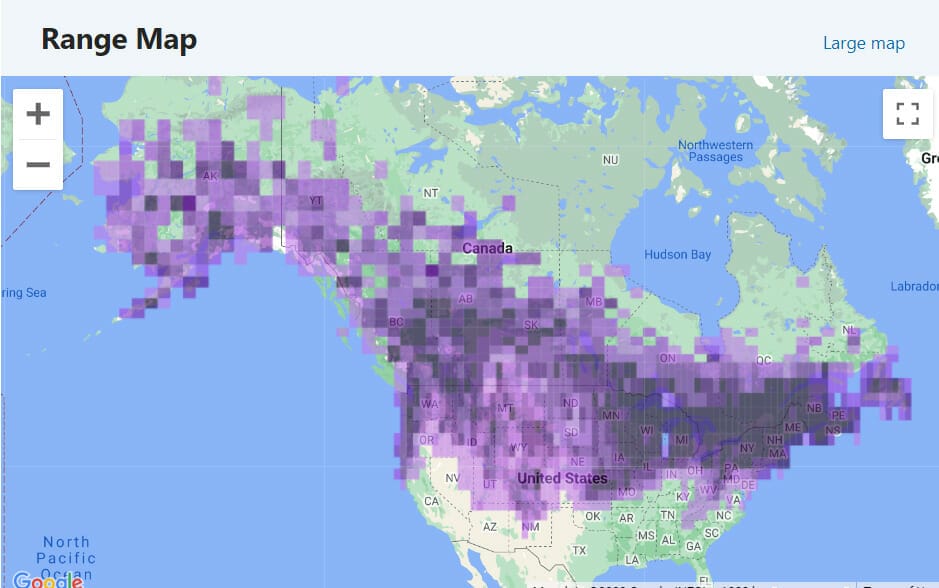
Mountain Chickadee (Poecile gambeli)

Similar to other Chickadee species, the Mountain Chickadee has a distinct white stripe above the eye. It is resident in the western side of the United States.
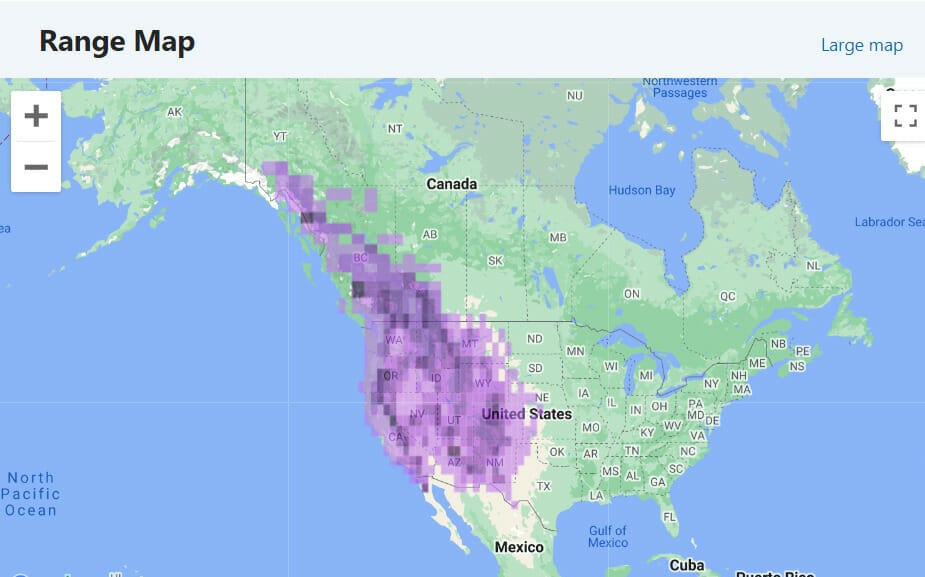
Mexican Chickadee (Poecile sclateri)
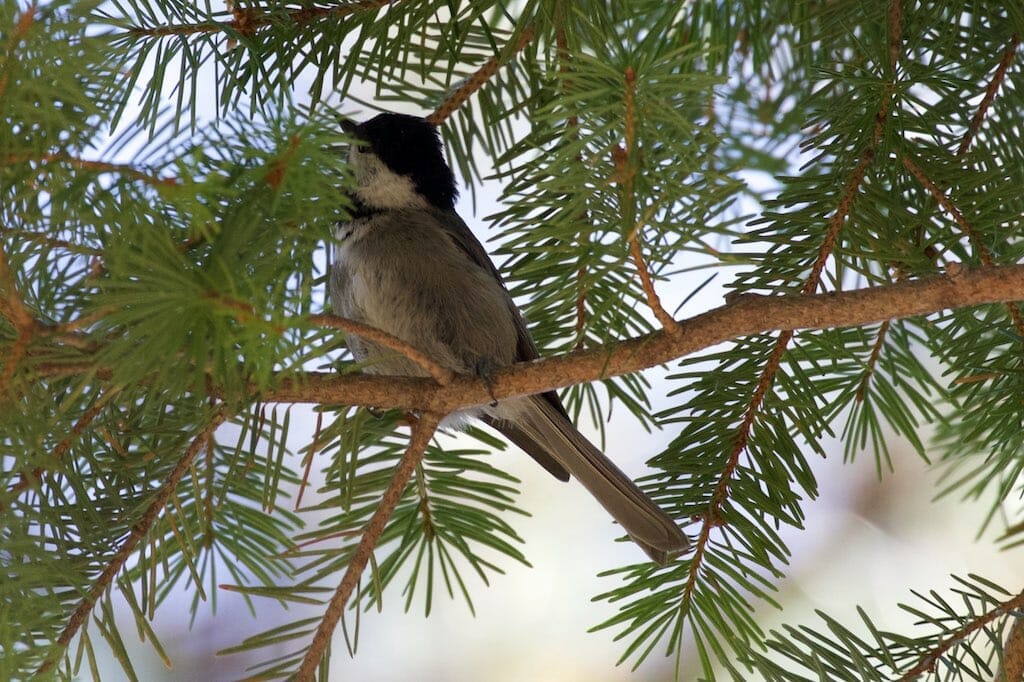
The Mexican Chickadee is a very rare visitor to southern Arizona. It has less warm brown tones being distinctly greyer.
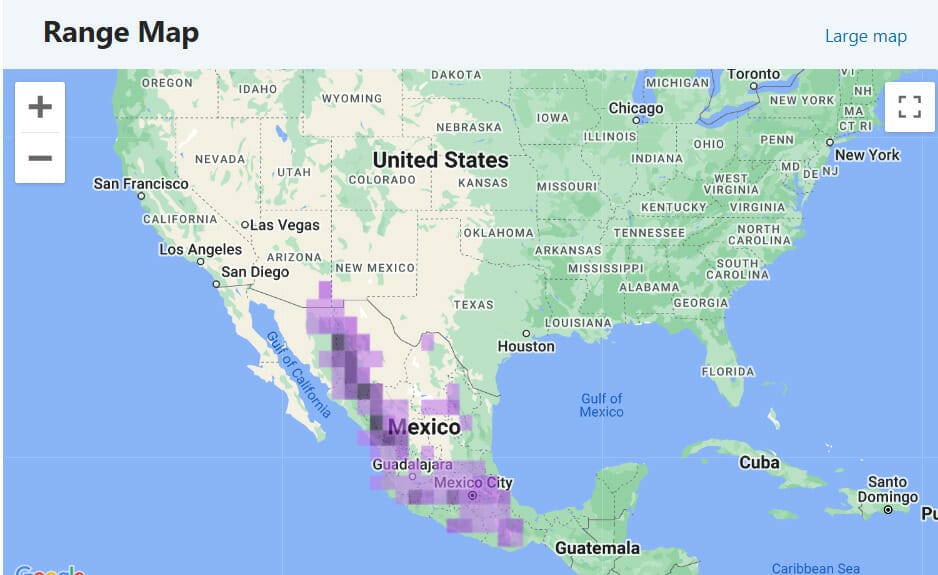
Chestnut-backed Chickadee (Poecile rufescens)
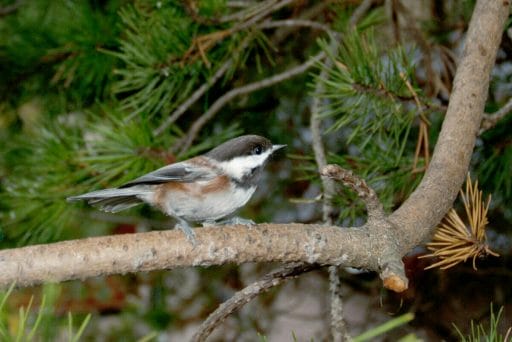
The Chestnut-backed Chickadee is a very attractive little bird with warm brown sides and back. It is resident in dense forests from northern California through the Pacific Northwest.
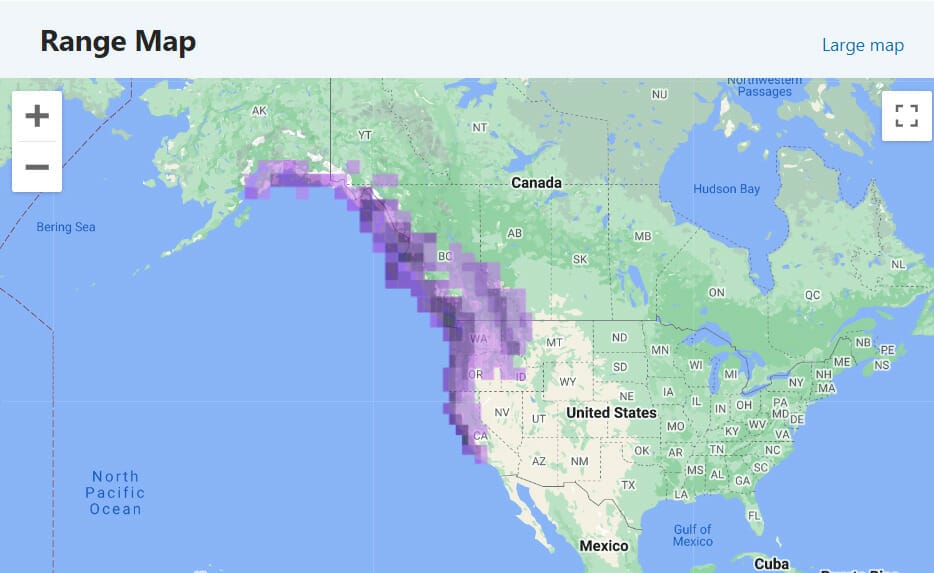
Boreal Chickadee (Poecile hudsonicus)

This is another forest dwelling Chickadee, found only in the far north of the United States and throughout Alaska. The black cap of the other Chickadee is replaced by a dark brown and it has rich chestnut sides.
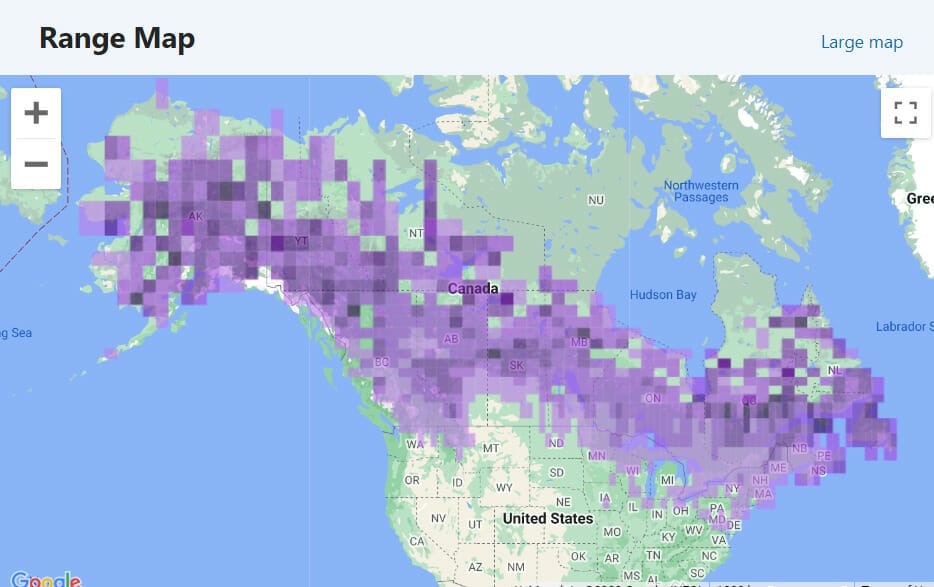
Siberian Tit (Poecile cinctus)
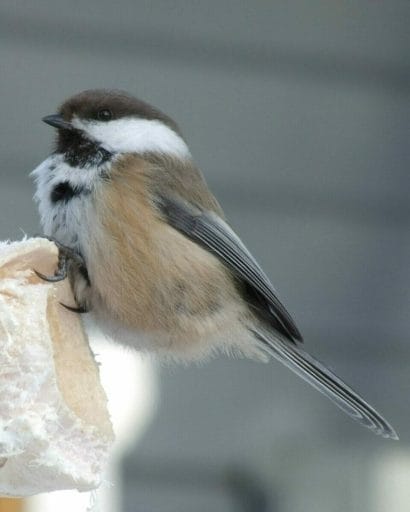
The Siberian Tit is also known as the Gray-headed Chickadee and is seeing very rarely in Alaska. It’s head is a gray brown and the buff sides set it apart from the other species.
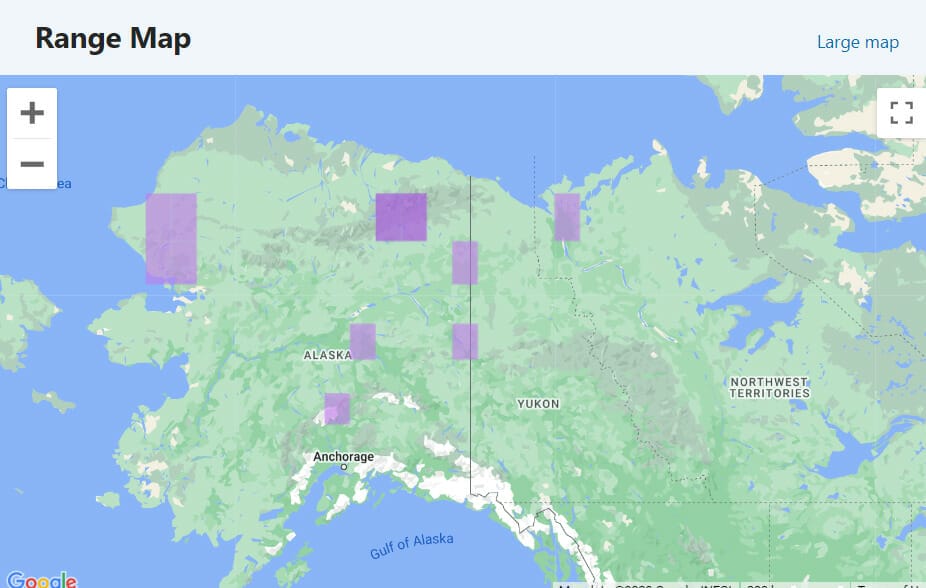
Common Chickadee
So, out of the 7 species of Chickadee reported to eBird in the United States, 4 are common and regularly seen. They are:
- Caroline Chickadee – found in southeastern America
- Black-capped Chickadee – found in northern America
- Mountain Chickadee – found in western America
- Chestnut-backed Chickadee – found in northwestern America
Chickadee Nesting
Nest Building
All 4 of the Chickadee species are essentially forest dwellers but have adapted to human presence well and now inhabit urban areas (the Mountain and Chestnut-backed to a lesser extent). None of them are migratory so can be seen all year round in their locations.
These Chickadee all make their first nest of the year between March and May, depending on the surrounding environment and prevailing temperature and climate. They all nest in cavities and sites include the native trees available or nest boxes. Once sites are excavated of any debris, nest building can commence. The females do most of the work of excavation and nest building.
The Chickadee still builds a nest inside the cavity. It is a cup shape and is made with rough materials. All species then line the cavity with plant fibers like moss. Then they will set a softer layer, often from other animal hair.
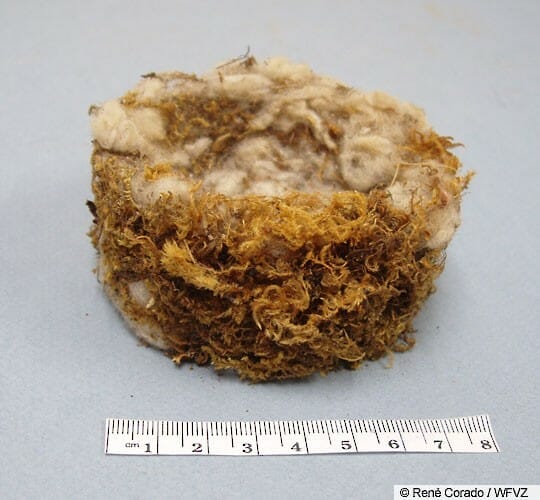
Egg Laying and Incubation
Chickadees, on average, lay between 6 and 8 eggs and may lay more than once a year. The female bird incubates the eggs alone with the male bringing food to her. The incubation period is between 12 and 15 days for all 4 species.
Nestlings
When the young birds hatch, they are naked except for a few wisps of down and have their eyes closed. The Chestnut-backed Chickadee male only feeds the nestlings from the second day and then irregularly. The males of the other species all share feeding. The food is regurgitated and given to the young. A higher percentage of the food is now insects as they are protein rich.
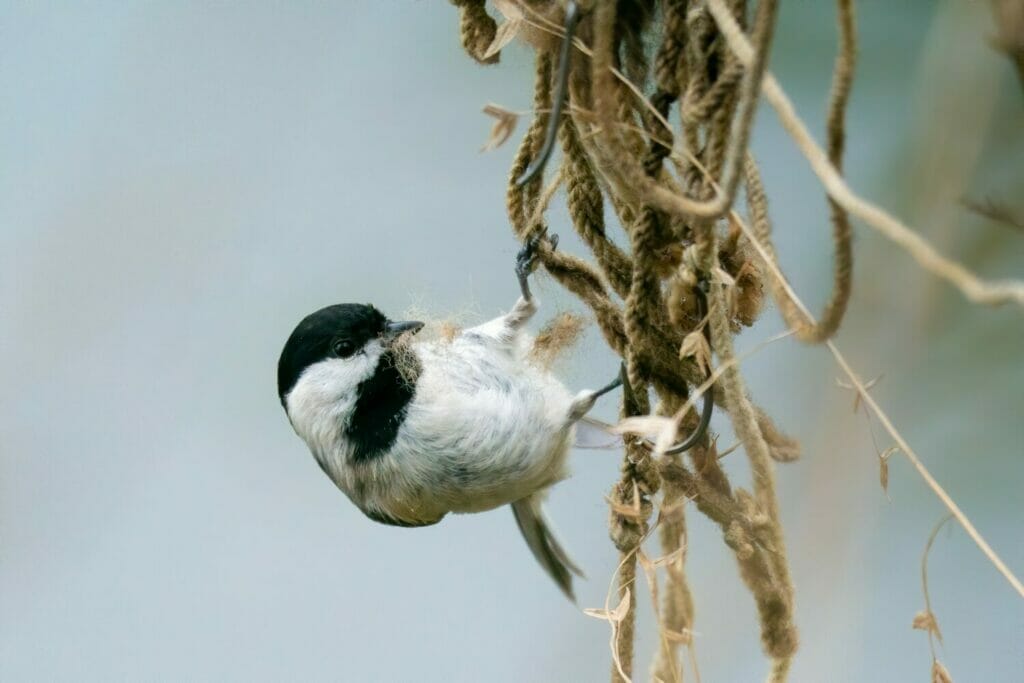
Fledglings
Times for fledging differ between the species:
- Carolina Chickadee 16 – 19 days
- Black-capped Chickadee 16 days
- Mountain Chickadee 18 – 21 days
- Chestnut-backed Chickadee 18 – 21 days
Encouraging Chickadees to Visit
There are 2 things that you can help Chickadees with: food and nesting. As there are different species in different locations, you need to use trial and error to see what works for you.
Food
Try the following foods on a feeder. Remember to clean and refill frequently as moldy and stale food may make any birds sick.
- Natural sunflower or other seeds
- Suet
- Peanuts
- Peanut butter
- Hulled seeds
Nest Boxes
- Care should be taken when setting up nesting boxes as the Chickadee are so small. The entrance hole needs to be suitably small to avoid attracting other species and to make the Chickadee feel secure.
- The nest box must have a drainage hole to allow rain water to escape.
- Provide soft nesting material.
- Think about the location. It shouldn’t be too high and if there are likely to be predators then research how to stop them getting access.

Conclusion
Chickadees are small and engaging forest birds that are curious and quite tame. I remember seeing my first Carolina Chickadee at a feeding table chipping away at the seeds. I thought they were totally adorable and I had no idea there were different species. I hope our guide has been informative and that you will try to attract them to your garden.
FAQ
Chickadees may abandon their nest if they are disturbed either by humans or predators. If the cavity hole is too large other birds may evict them as well.
It is surprising and sad that Chickadees only live for a few years.
The female stays with the eggs all the time and so sleeps in the cavity. The males will roost somewhere close by.
